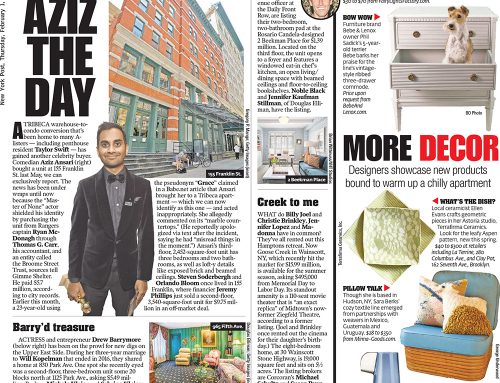Without it looking like a consignment shop
Matchy-matchy wood furniture sets had their moment. And it has blessedly passed. “Mixing wood tones makes a room more inviting and effortless, rather than calculated and expected,” says Hannon Douglas designer Hannon Kirk Doody, “I would not shy away from putting together, for instance, a painted oak table and a Louis XVI walnut commode.” Doody also recommends dodging blandness by incorporating other materials (glass, metals, stone) along with the wood.
Because most people don’t buy all their furniture at the same time and place, you’ve probably already been mixing wood furniture tones without knowing you were being stylish. Now you just need to be sure you’re doing it right. “Since wood tones are in the ‘neutral’ category, it is relatively easy to mix them and achieve a visually pleasing result,” says Tulsa designer Emily Davis. “But when in doubt, go for contrast. Mixing a dark wood (like ebony) with a light wood (like lime) will always look chic and intentional.” If you’re starting with a wood floor and are adding new wood tones (a table, chairs, etc.), consider using a rug to act as a buffer. Things starting to look too busy? Go with white as a neutralizer: Paint, fabrics—any white accents will balance out the browns.
“If you open a design textbook, you’ll find the dining table and chairs in the same wood tone. But you should know when and how to break the rules,” says designer Anne Wagoner of Anne Wagoner Interiors, who loves the narratives that are born from whatever circumstances—travel, inheritance, an unconventional eye—bring furnishings together. “You should have a connection with the pieces you invite into your home. At the end of the design process, your home should be a harmonious collection of things you love, whether curated ‘by the book’ or not.”
Integrating wood tones may be on the rise, but it isn’t a new idea. “Wood mixing has been done for centuries,” says Katherine Connell of Katherine Connell Interior Design, “Take, for instance, an antique mahogany sideboard with rosewood inlay, or a Beidermeier piece with burled wood and ebonized accents.” When combining woods for clients, Connell prefers to stay away from species that have too much movement. “I love walnut. A woodworker years ago told me, ‘There is walnut, and there is firewood.’ I love the subtleties of the grain, and it’s beautiful with no added color.”
Aim to preserve a little of what nature created by ditching the shellac (so you can actually see those grains). It’s easier to mix and match your woods when they aren’t heavily lacquered—when they look like they actually came from, you know, the woods.
Originally Posted on Architectural Digest by Hampton Williams Hofer.



